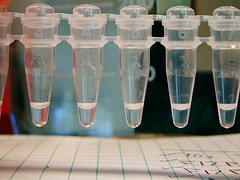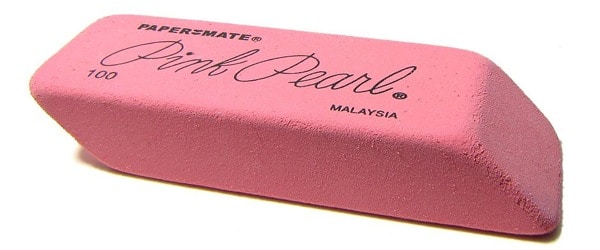PCR is highly sensitive, but the downside of that very property is that it makes the technique prone to producing false-positives. In labs where PCR is a staple, like the one I work in, any false-positives are more often than not due to amplicon contamination.
A broken capillary or a PCR plate left carelessly at the table edge is all it takes to aerosolize those amplicons. The next thing you know is it shows up in every PCR reaction that you run. If you frequently run PCR, then you know what I am talking about.
So what do you do to decontaminate?
Well a simple, but effective way to combat an amplicon contamageddon, is to wipe down everything, equipment, workstations and pipettes, with bleach. Yes, bleach… not HCl. If you routinely use HCl for decontaminating rogue DNA then you definitely need to read on.
Sodium hypochlorite, the active ingredient in bleach, was shown in a 1992 study to effectively protect against amplicon contamination by causing extensive nicking, which prevented the 600bp fragment they tested from being amplified by PCR (see A. M. Prince, L. Andrus PCR: Biotechniques 1992 Mar;12(3):358-60).
The same study showed that even a after 5 minute exposure to 2N HCl, that same 600bp fragment could be detected by PCR. So HCl is not up to the job… its time to get the bleach out.
Which bleach should you use?
The efficacy of bleach in DNA decontamination (and as a disinfectant) depends on the amount of free and available chlorine. 0.05 – 0.5% of free and available chlorine is considered an intermediate level disinfectant and a commercial bleach (like Clorox) contains 5.84% available chlorine so a 10-100x dilution from a commercial stock will work just fine.
I tend to use a 10 dilution of Clorox and, in the above-mentioned study, Prince and Andrus used around a 20x dilution. You can make your own choice.
How and when to decontaminate
Generously spray workstations/equipment/pipettes with 10% bleach, then let it sit for 15-30 minutes (coffee break time!). Then wipe up the bleach and follow up with a water rinse and wipe — bleach is corrosive, so it will damage materials if residue is not removed by rinsing with water.
This procedure should be carried our before and after each PCR, and definitely after a spill. I religiously stick to a weekly cleaning routine of all of my PCR equipment and workspace and that has gone a long way to preventing amplicon contamination
Important points about diluting and storing bleach
Use clean water to dilute the bleach
I use regular tap water and that has worked well so far but hypochlorites are very unstable and decompose very quickly with hard water, reducing the availability of chlorine. So you may want to use a purer water, just to make sure.
Make fresh dilutions as often as possible
Potency of bleach will reduce over time so, it is essential to regularly make fresh dilutions. If you do not smell the chlorine in the bleach, then it is time to make a fresh dilution. We keep our (1:10) dilutions for about 1-2 weeks.
Store dilutions at room temperature in opaque containers
We use regular plastic spray bottles for the dilutions and store them under the sink. Temperature, light and oxygen are all catalysts for decomposition of bleach.
Make sure you use the correct PPE when handling bleach
Lab coat, gloves and safety glasses…. But you do that anyway, right?







